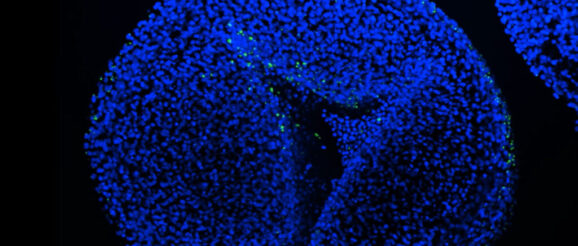Nano-plastics cause malformations and disrupt growth in living organisms – Innovation Toronto

Nano-plastics cause malformations. Meiru Wang, researcher at the Institute of Biology Leiden, looked at the extreme effects polystyrene nano-particles could have, using chicken embryos as a model. Her results were quite alarming. Especially as nano-particles are everywhere. In the air, floating through our seas and rivers, in cosmetics and shampoos, and now researchers are even investigating whether they can be used in human medicines.
‘We see malformations in the nervous system, heart, eyes and other parts of the face,’ Wang says. ‘We used a high concentration of polystyrene particles, that would normally not be present in an organism. But it shows what nano-plastics can do in extreme cases on very young embryos. And it also gives us guidelines on what can happen less severely in the developmental stage.’ The results are now published in the leading journal Environment International.
Nano-plastics target stem cells
Nano-plastics target the embryonic neural crest cells, Wang found. These stem cells are formed very early in all vertebrates at the beginning of their existence. The neural crest cells start in what will be the spinal cord, and migrate to create part of the nervous system. They also form parts of several important organs, such as the arteries, heart and face.
‘When you know the mechanism, everything else falls into place.’
However, when nano-particles surround the neural crest cells, the migration of those cells is disrupted. This results in growth disturbances. Michael Richardson, supervisor of Wang: ‘When you know the mechanism, everything else falls into place. We think they stick to the neural crest cells, which causes the cells to die. Neural crest cells are sticky, so nano-particles can adhere to them and thereby disrupt organs that depend on these cells for their development. I like the metaphor of making dough. When making bread, for example, you put flour on it to make it not sticky anymore. However, in this case, it ruins the migration of the neural crest cells.’
Finding mechanisms with 3D reconstructions, X-rays and expertise
The research project involved multiple research centers in Leiden and abroad including CML, whose new director, Martina Vijver, is Wang’s supervisor. ‘Because nanoplastics are so small, it is impossible to see them using conventional microscopes. That is what makes it difficult to research. We can only see them when they are fluorescently tagged,’ Richardson explained. ‘Collaboration was the way to go, as this type of research can’t be done as a one-man band.’
The researcher continues: ‘At Naturalis Biodiversity Center in Leiden, Martin Rücklin and Bertie Joan van Heuven were able to make 3D reconstructions of the embryos, so we could clearly see the malformations. And with the high-resolution synchrotron Switzerland, we could see what happens in the heart. Experienced researchers from the LUMC helped define what we see.’
One step forwards
Wang is very happy with her research, even with its worrying results. ‘Everything is a question mark in research, and you get the chance to fill in the gaps. I have many great supervisors and colleagues, who encourage me and make me braver. This research is only one step to see what are the ultimate effects of nano-plastics in our environment. And especially as people are now looking into using them in human medicines, we believe that we should take care before these drastic effects are seen in humans.’
More information: Roser Salvia et al, Fast-screening flow cytometry method for detecting nanoplastics in human peripheral blood, MethodsX (2023). DOI: 10.1016/j.mex.2023.102057 Provided by …
Houston, TX, March 06, 2023 (GLOBE NEWSWIRE) — According to Zion Market Research has published a new research report titled “Extruded Polystyrene Insulation Materials Market By Application …
